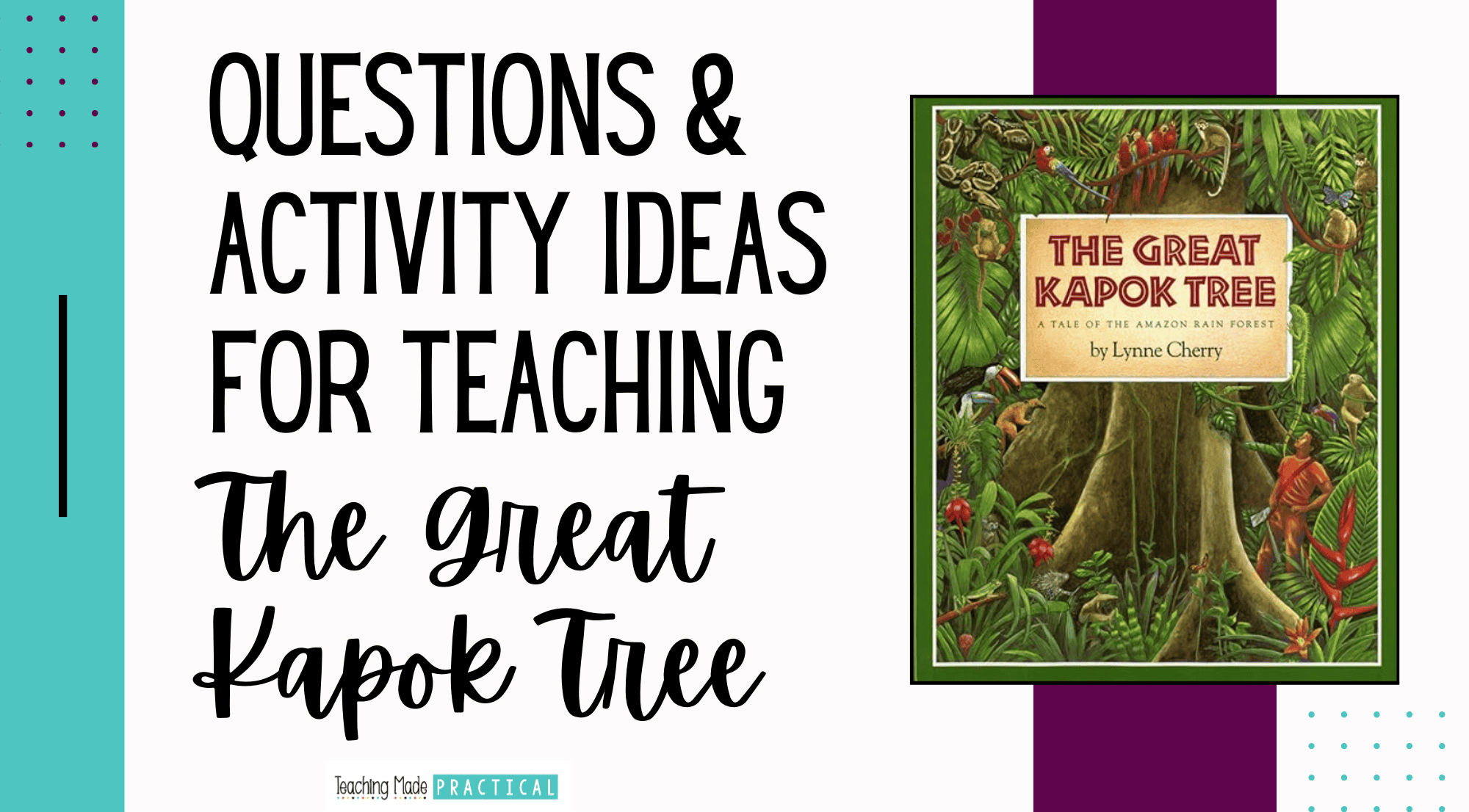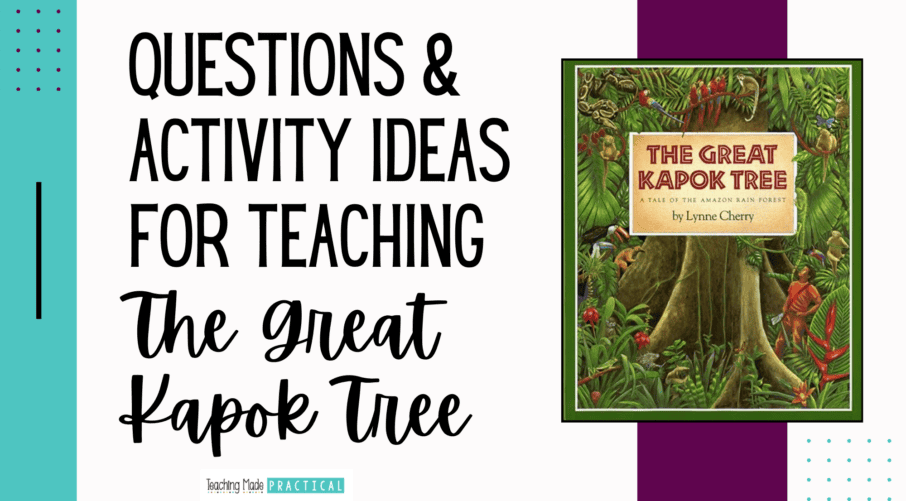
The Great Kapok Tree is a compelling story that teaches about the importance of protecting the environment, particularly the rainforest. It makes a great 3rd, 4th, or 5th read aloud for Earth Day - or any time of year.
Below, find questions and activity ideas to use in your upper elementary lesson plans when reading Lynne Cherry's The Great Kapok Tree.
Summary of the Read Aloud The Great Kapok Tree
Before, During, and After Reading Questions for The Great Kapok Tree
Before Reading Questions
- What is the setting of the story? What do you know about this setting?
- How does the subheading help you better understand what the story will be about?
- Do you think this will be a fiction or nonfiction story? Why?
During Reading Questions
- What do you think the two men were talking about?
- What figurative language have you noticed in this story? How does it make the story more interesting?
- How do you think this story will end? Why?
After Reading Questions
- Who do you think the main character of the story is - the man, one of the animals, or the tree? Why?
- What do you think the author wanted you to learn?
- Which animal do you think provided the most convincing argument? Explain.
Activity Ideas to Use In Your Great Kapok Tree Lesson Plans
Try This Easy Leaf Experiment for Earth Day
In The Great Kapok Tree, the tree porcupines tell the man that the trees produce oxygen. This free, simple leaf experiment allows students to see oxygen bubbles from leaves. This is a great way to connect science and reading - and also makes a fun and easy Earth Day experiment.
Along with the experiment, celebrate nature by going outside and using one of these outdoor learning ideas.
Learn More About the Rainforest
Help your students learn more about the rainforest with the resources below.
This free, downloadable book from the Rainforest Alliance includes photographs and tells about Romel, a Chachi Indian kid who lives near a rainforest.
This no prep resource includes a reading passage, comprehension questions, and a poster activity.
This video will take your students on a virtual field trip to the rainforest.
Introduce or Review Figurative Language
This is a fantastic book for helping students better understand different types of figurative language. The author, Lynne Cherry, incorporates figurative language throughout the book.
As you are reading, take time to point out the different ways the author uses onomatopoeia, similes, alliteration, and other types of figurative language. Some examples from the book are below. After reviewing figurative language in the book, have students practice with these figurative language activity ideas or have them go on a figurative language scavenger hunt.
Onomatopoeia
- Whack! Chop!
- hissed
- buzzed
Alliteration
- "heat and hum"
- "snake slid"
- "bee buzzed"
- "sun streaming"
- "strangely silent"
Idiom
- "feast your eyes"
Simile
- "Spots of bright light glowed like jewels..."
Personification
- throughout the book, the animals are given human characteristics, talking and reasoning with the man
Reading Response Activity
Want This Reading Response Freebie?




